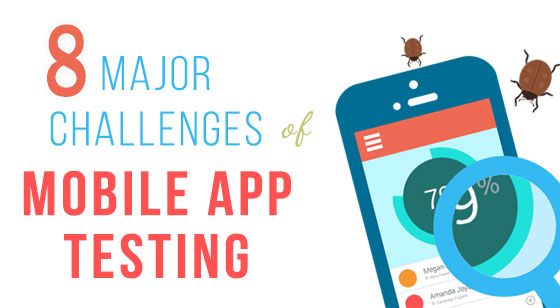Mobile apps have been a game changer for various industries who aim to automate their business processes and improve work efficiency. Be it enterprise applications or consumer applications, mobile apps open up numerous gateways for increasing revenues, boost reach-ability and reduce costing.
Developers are also creating sophisticated, feature rich apps that meet specific consumer needs and present the users with an amazing experience. This shift of business operations towards mobile devices has also brought testing to the center stage for analyzing and improving the efficiency of mobile apps.

However, new technologies have also brought about new set of challenges to the testing world. With so many options just a click away, mobile users do not settle for anything less than the best and even minor issues in an app could lead to its abandonment by the users.
Mobile app developers are flooding the market with new and innovative apps and to stand out in the competition, apps need to be extremely efficient and rock solid, devoid of faults, before being launched in the market. However, this also brings in some major challenges to the testing world.
See Also: 10 Do-It-Yourself Platforms To Develop Your Own Mobile App
Let's have look at the major challenges of mobile app testing:
User Interaction
The screen sizes of mobile devices are comparatively small and presenting all the data in such screens often becomes difficult. Keeping the user interaction simple and clean while displaying all the important information is a challenging task.
Maintaining the font size, layout and readability is also another important concern. While testing, size of click areas must also be checked thoroughly to ensure that the texts are easily readable.
Security Concerns
Mobile apps these days serve a number of purposes, many of which require storing or accessing sensitive information. This calls for high security layers in apps.
Mobile apps managed through public cloud, especially, are susceptible to threats. Thus, the testing team must make sure that the apps are secure and there isn't any possibility of data breaches.
Different Operating Systems
Different users opt for mobile devices having different operating systems and while testing it is important to ensure that the app is working perfectly on all the mobile devices, proving equally great user experience.
Updating of apps across all the operating systems must be equally convenient, smooth and quick.
Screen Size
The variety of pixel dimensions and aspect ratios in different devices is another challenge to be looked after. With the introduction of iPhone 6, Apple has also brought new screen sizes to the world of iOS.
This leads to the need to checking the apps on all mobile devices to ensure that all the essential screen elements are accessible with all the screen sizes and aspect ratios.
Power Consumption
Mobile users run several apps in the devices, among which many processes run in the background even beyond our notice. There are many apps that consume more power than others, leading to a dying battery in a short span of time.
Mobile app testers must ensure that the app has been developed using best practices so that the power consumption remains minimal.
See Also: 5 Lesser-Recognized Roadblocks To Smooth Mobile App Development
Mobile Apps for International Use
The impact of globalization has been so strong that most of the apps are developed for use in international markets. Testers must focus on regional traits like time-zones and local settings as well as on target audience.
Changing time while the app is running, maintaining uniform usability across the world and provision for varied languages are some of the major concerns for such mobile apps.
Different Connection Types
Mobile data connections, these days, have several standards including 3G, 4G etc. Also, sometimes there might be no connection at all.
While users are on the move, connection types might change. In some cases, carriers filter the web and, as a result, devices connected to a network often fail to support some specific services like calling through apps.
Although developers keep such challenges in mind while developing the apps, in the real world certain unforeseen issues might crop up. Thus, while testing it is important to test the bandwidth usage for apps.
Timely Release
New mobile apps are dropping in the market every now and then and development and release of apps must adhere to deadlines to stay ahead in the competition. Such strict timelines also raise the need of a close coordination among design, development and testing teams.
Various stages of development must be immediately followed by testing to ensure shorter delivery time. Testing of mobile apps must be framed wisely so that the procedure remains effective as well as quick.
See Also: Checklist for Testing Your Newly Developed Mobile App